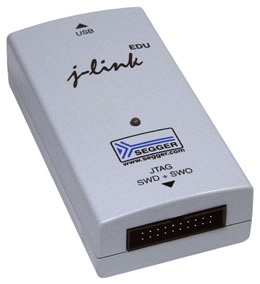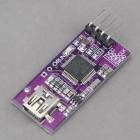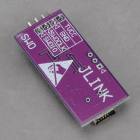Hardware debugging
The code can be compiled with debugging information, you can then upload a debug version to a board via a JLink/St-Link debug adapter and step through the code in your IDE.
More information about the necessary hardware and setting up the eclipse IDE can be found here
A guide for visual studio can be found here: http://visualgdb.com/tutorials/arm/st-link/
This video is also helpful in understanding the proces: https://www.youtube.com/watch?v=kjvqySyNw20
Hardware
Various debugging hardware solutions exist, the Segger J-Link clones are cheap and are known to work on Windows with both the Naze and Olimexino platforms.
J-Link devices
Segger make excellent debuggers and debug software.
The Segger J-Link GDB server can be obtained from here.
http://www.segger.com/jlink-software.html
Segger J-Link EDU EDU version, for hobbyists and educational use.

https://www.segger.com/j-link-edu.html
USB-MiniJTAG J-Link JTAG/SWD Debugger/Emulator
http://www.hotmcu.com/usbminijtag-jlink-jtagswd-debuggeremula%E2%80%8Btor-p-29.html?cPath=3_25&zenid=fdefvpnod186umrhsek225dc10

ARM-JTAG-20-10 adapter
https://www.olimex.com/Products/ARM/JTAG/ARM-JTAG-20-10/ http://uk.farnell.com/jsp/search/productdetail.jsp?sku=2144328

CJMCU-STM32 Singlechip Development Board Jlink Downloader Jlink ARM Programmer


http://www.goodluckbuy.com/cjmcu-stm32-singlechip-development-board-jlink-downloader-jlink-arm-programmer.html
STLink V2 devices
STLink V2 devices can be used too, via OpenOCD.
CEPark STLink V2

http://www.goodluckbuy.com/cepark-stlink-st-link-v2-emulator-programmer-stm8-stm32-downloader.html
Compilation options
use DEBUG=GDB make argument.
You may find that if you compile all the files with debug information on that the program is too big to fit on the target device. If this happens you have some options:
- Compile all files without debug information (
make clean,make ...), then re-save ortouchthe files you want to be able to step though and then runmake DEBUG=GDB. This will then re-compile the files you're interested in debugging with debugging symbols and you will get a smaller binary file which should then fit on the device. - You could use a development board such as an Olimexino or an EUSTM32F103RB, development boards often have more flash rom.
OSX
Install OpenOCD via Brew
ruby -e "$(curl -fsSL https://raw.githubusercontent.com/Homebrew/install/master/install)"
brew install openocd
GDB debug server
J-Link
Windows
Run the Launch the J-Link GDB Server program and configure using UI.
OpenOCD
Windows
STM32F103 targets
"C:\Program Files (x86)\UTILS\openocd-0.8.0\bin-x64\openocd-x64-0.8.0.exe" -f interface/stlink-v2.cfg -f target/stm32f1x_stlink.cfg
STM32F30x targets
"C:\Program Files (x86)\UTILS\openocd-0.8.0\bin-x64\openocd-x64-0.8.0.exe" -f scripts\board\stm32f3discovery.cfg
OSX/Linux
STM32F30x targets
openocd -f /usr/share/openocd/scripts/board/stm32vldiscovery.cfg